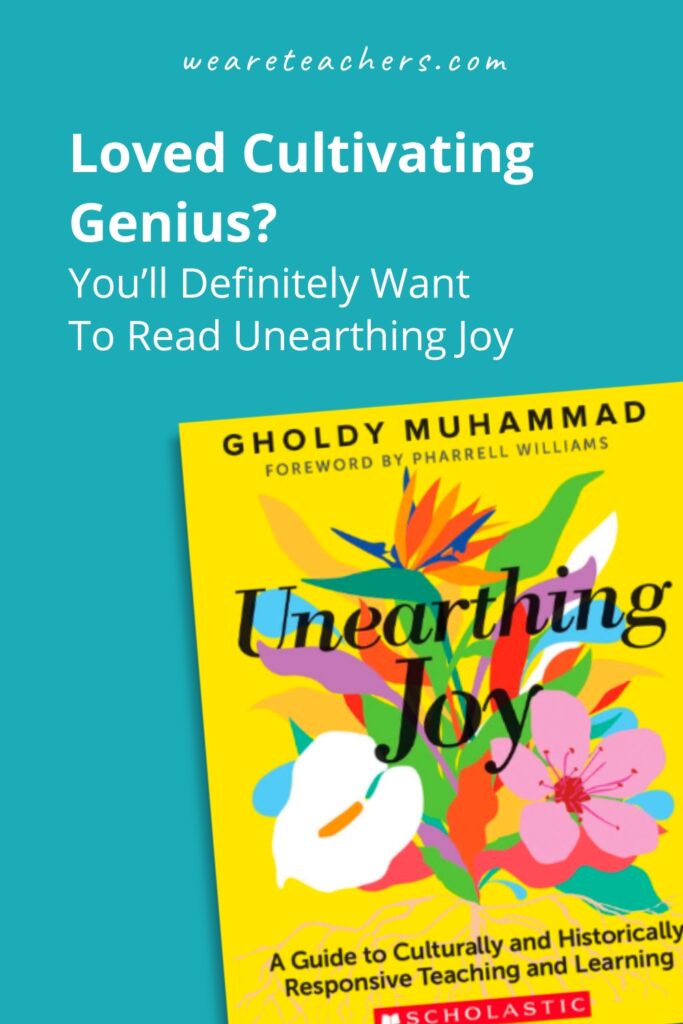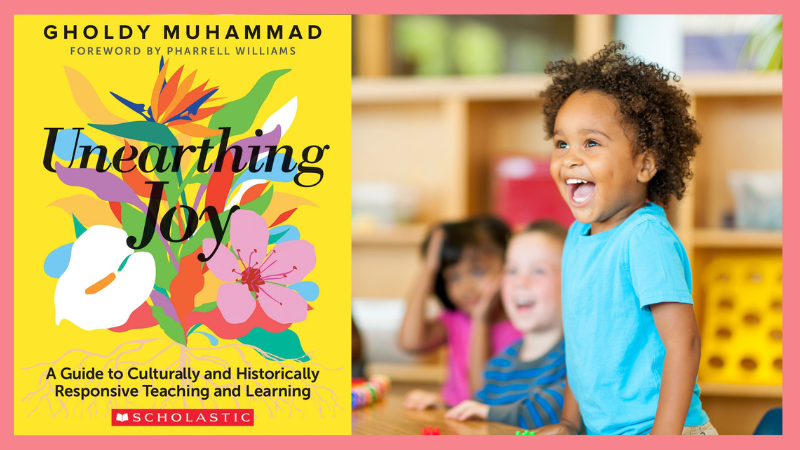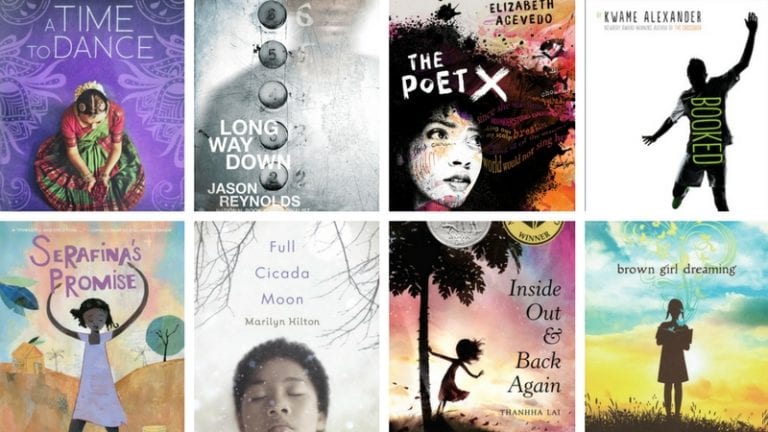Think about this: How often was joy the focus of your education as a student? How about your teaching program? Let’s take it one step further: How often is joy centered in your teaching?
Dr. Gholdy Muhammad asks teachers these questions in Unearthing Joy: A Guide to Culturally and Historically Responsive Teaching and Learning, eventually arriving at what is missing from education today: joy, especially in our education of students of color.
Students of color have ancestors with deep roots in using art and aesthetics to showcase joy through wellness, healing, and justice. We’re missing out, Muhammad posits, on prime opportunities to show moments of triumph within our students’ communities and histories, creating huge disparities in the education system for our students of color.
Here are the three most powerful takeaways as I read Unearthing Joy:
Cultivating joy with music and art
At the start of each chapter, Muhammad prompts teachers to create a space within and around them that encourages genuine reflection about unearthing joy. The most engaging way she does this is by sharing carefully curated, layered playlists to play as background noise while reading. The songs build connections with the words on the page, a practice I’d never considered before. My personal favorite is the one inspired by Stevie Wonder, with songs like “Black Orchid,” “The First Garden,” and “Power Flower.”
As a person who has always preferred silence while reading, Muhammad flipped me to the other side ever so smoothly. The plant-themed song selections clearly tie into her call to “water the earth with educational excellence.” Reading her words about growth while playing music by a man who managed setbacks to cultivate a life of beauty gave me a truly layered learning experience.
In addition to the thematic playlists, she ends each chapter with a coloring page to allow the mind to wander while thinking about responses to the end-of-chapter free-write. Music, art, and literature are effortlessly intertwined in this text, engaging the reader while simultaneously illustrating the importance of joy.
The importance of true reflection
Education is constantly changing, and as a result, we as educators are quick to hop on trends. Borrowing new ideas is par for the course in this profession: If it works for another teacher and could save you time, why reinvent the wheel?
I’ll be the first to admit I jumped on some popular trends back in my classroom days, like flipped classrooms, escape rooms, and makerspace challenges. While I had several successes, many of them flopped. I wish I’d had Dr. Muhammad’s guidance in reflecting on these practices. In the book, she explains in detail how a reflection pathway helps to unearth knowledge of self and students. She lists a series of questions to help teachers understand the five pursuits within themselves and their students:
- Identity
- Skills
- Intellect
- Criticality
- Joy—the newest pursuit
“Answering these questions will help you build positive and respectful relationships with your students. In time, they will see their classroom as mini-literary societies and intellectual feasts, where they can connect their learning to the world and the needs of humanity.” Muhammad is truly shifting the typical landscape of education to one where we put the human first. We treat educating students as a holistic requirement, which encourages teachers to truly embrace the student demographics in their classroom. It also allows students the space to learn about themselves within the curriculum. Chef’s kiss, Dr. Muhammad. Simply beautiful.
A literal guide for implementation
Have you ever attended professional development and realized you have nowhere to actually start once you got back to campus? Same. Unearthing Joy provides educators with an actual guide. Muhammad gives you the necessary steps to put what you’ve experienced, learned, and “unearthed” in the text into practice. This includes:
- Templates
- Questions to ask yourself, leadership, and students
- Sample unit plans for various grade levels (as a teacher of high school students for many years, I loved this the most. Many math and ELA professional developments were geared around elementary education.)
- Curriculum-evaluation tools
- Sample school policies to support the development of curriculum implementing the five pursuits
- Practice activities to build out your first lesson using the five pursuits.
These take the guesswork out of the post-PD confusion educators often feel, putting them in a position to be a culturally responsive educator immediately. It also provides a low-risk environment to be creative within the context of a range of state standards and district evaluation requirements.
I’ve always known my students have rich cultures, but I never had the right tools to unearth them. As someone who was only recently introduced to Dr. Gholdy Muhammad, I’m still on an educator’s high from reading this book. I plan on putting so many of these ideas into place immediately as I develop a human-first-centered curriculum within my current role.
If you’re looking to be intentional about your student’s academic, social, and community experience within your classroom, look no further than Unearthing Joy.
Is this a PD book you’d be interested in reading? Let us know in the comments!
Looking for more articles like this? Be sure to subscribe to our newsletters!


